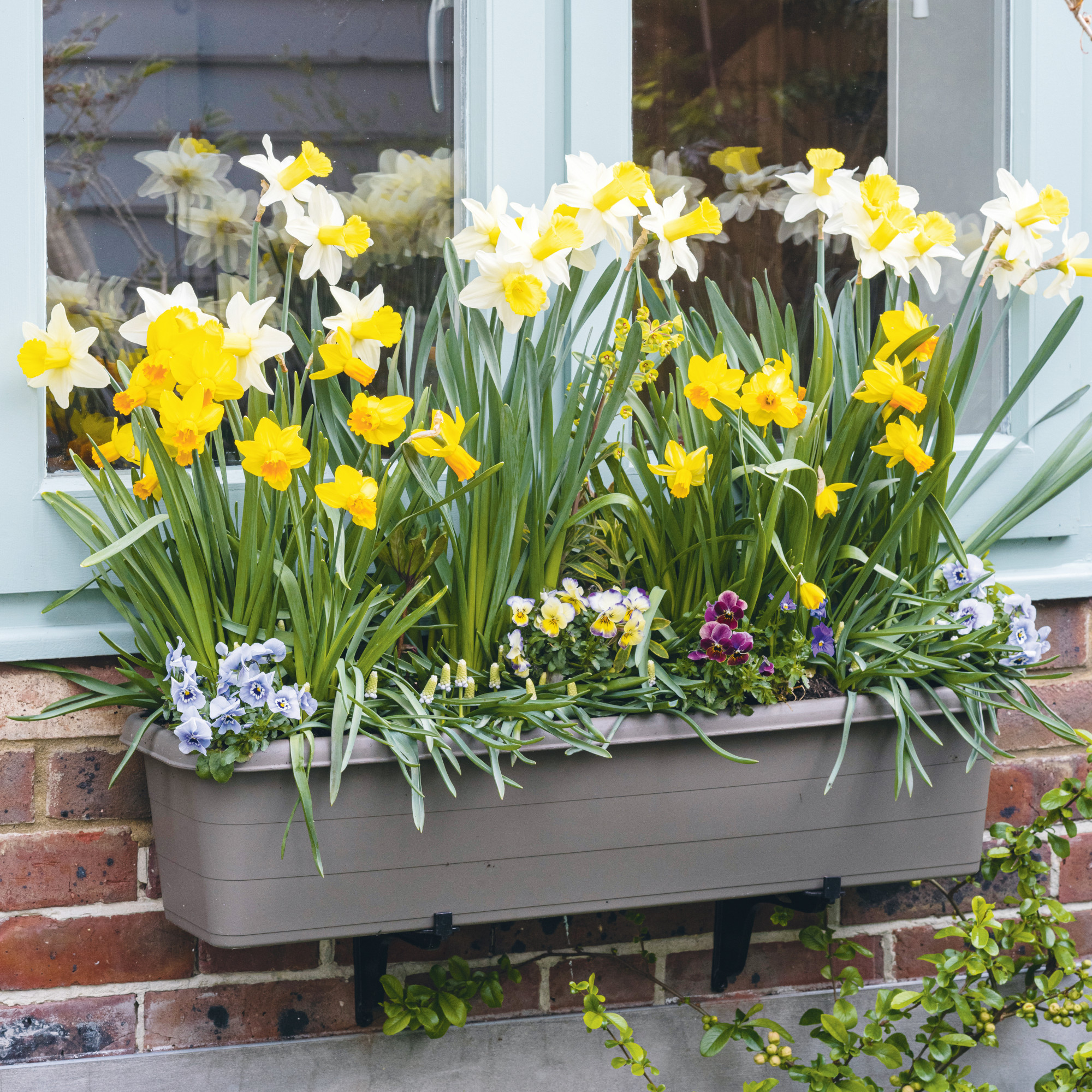
There’s nothing quite like seeing the first daffodils pop up from the ground. These sunny blooms are a sure sign that spring has sprung, and they can add a much-needed burst of colour to your garden after the cold and gloomy winter. But have you ever wondered how to plant daffodils in clumps?
Of course, you may already know how to plant daffodil bulbs, but there’s a big difference between planting the odd daffodil here and there and planting daffodils in clumps. As Morris Hankinson, Managing Director of Hopes Grove Nurseries, says, ‘Planting daffodils in clumps is a great way to create a more natural, meadow-like appearance in your garden.’
The best bit? You can plant these clumps anywhere from your garden borders to the pots in your container garden and even in your lawn. But if you want to experience this daffodil overload next spring, you need to know how to plant daffodils in clumps - and we’ve got all the information you need below.
What you’ll need
There are around 100 mixed daffodil bulbs in this pack, perfect for planting in clumps and transforming your spring garden.
Although you can use a bulb planter to plant daffodils in clumps, it's easier to dig the holes by hand. You can use this trowel to do that.
It's always worth adding in some fresh free-draining compost when planting daffodils in clumps, and this stuff should do the trick.
Step-by-step
1. Mix and match your varieties

One of the things we love about planting daffodil bulbs in clumps is that they can naturally add colour and vibrancy to your garden. But too much of the same thing can be a little boring - which is why you should mix and match your varieties when planting daffodils in clumps.
As well as offering a mixture of deep and pale yellow flowers, doing so will also help if you always struggle to make your daffodils last longer.
Morris says, ‘If you want blooms to last longer and give waves of colour in spring, you could mix up early, mid, and late-flowering daffodil varieties within each clump.’
2. Time it perfectly

Choosing when to plant daffodils in clumps is easy as it’s the same as when to plant regular daffodil bulbs.
Pim Dickson, a horticulture expert at Mr Fothergill’s, explains, ‘In most regions, it’s best to plant your daffodil bulbs in autumn in order to enjoy the best displays come springtime. Your daffodils then have time to establish long and healthy roots before winter and begin to flower just as the sun comes back out.’
Don’t worry if you miss the boat, though. Technically, you can plant daffodil clumps anytime from autumn to January, as long as the ground isn’t frozen when you do so.
3. Choose the ideal planting spot

When you’ve got your daffodil bulbs at the ready and you’ve chosen the perfect time to plant daffodils in clumps, you then need to find the ideal planting spot for them.
However, the tricky thing with daffodil bulbs - especially those planted in clumps - is that they need sunlight to grow. This can be difficult to come by during the winter months, so you may struggle if you have a north-facing garden.
Morris echoes this, stating, ‘Daffodils thrive in areas with good drainage and full sun, though they tolerate partial shade well. Find a spot where you want to create a natural look, such as around the base of trees, along borders, or on a lawn.’
4. Pick 5-7 bulbs for each clump

You don’t just plant one bulb when planting daffodils in clumps. Instead, you need to grab a few bulbs to create these clumps before planting - but you don’t want to go too overboard.
Morris suggests, ‘The number of bulbs per clump can vary, but groups of 5-7 or even 10-12 bulbs work well. Varying the size of the clumps helps make the planting appear more spontaneous.’
So, while you can choose as many bulbs as you’d like to form a clump, you don’t want to pick too many at a time as they may look a little crowded and may even start to compete with each other for vital nutrients.
5. Plant your bulbs

When you’ve chosen the number of bulbs you want for your daffodil clump, you can then start planting. The aim here is to dig a hole that’s both wide and deep enough to fit all of your bulbs together while also giving them space to grow individually.
Morris suggests, ‘Plant the bulbs fairly close together, about 7-10cm apart. This creates a fuller effect when they bloom. If you're planting 10, you could use seven to create a circle, and then plant three in the circle’s centre. Daffodils should be planted at a depth of about 10-15cm so they are protected from frost and grow strong stems with the pointed ends facing upwards.’
Of course, you can go wild with this planting, too. As long as you give them the space they need, you can plant them in any pattern or shape you want to keep things extra natural. You should also always plant bulbs with the pointy end facing up.
6. Water them well

Now that the daffodil clumps have found their home, it’s time to make them nice and cosy for the winter months.
Pim advises, ‘Settle the soil by watering and composting the surrounding area of the bulbs. Past that point, your bulbs shouldn’t really need any further watering unless the weather is particularly dry during growing.’
Yes, in most cases, you can rely on Mother Nature to water your daffodils. After that, all you need to do is wait for them to bloom and then understand what to do with daffodils after flowering.
FAQs
How many daffodils are in one bulb?
Generally, you’ll find that one daffodil bulb can produce between 1 and 3 flowers each blooming season. But as daffodils are perennials, you’ll find that they will not only come back next year - but they’ll also start to multiply by themselves. This means that you should get more and more flowers with each passing year.
Can you plant bulbs too close together?
Yes, you can. Like all bulbs, daffodil bulbs need their space. And while planting them in clumps is a great way to create a more natural, meadow-like look in your garden, some bulbs may not be able to establish themselves fully if they’re too close together.
As a result, you may find that some bulbs don’t flower as they have struggled to compete with the other bulbs for essential nutrients and water.
Plus, if daffodil bulbs are planted too close together and one starts to rot in the soil, the rest of them may follow suit.
So, will you be planting your daffodils in clumps this year?







